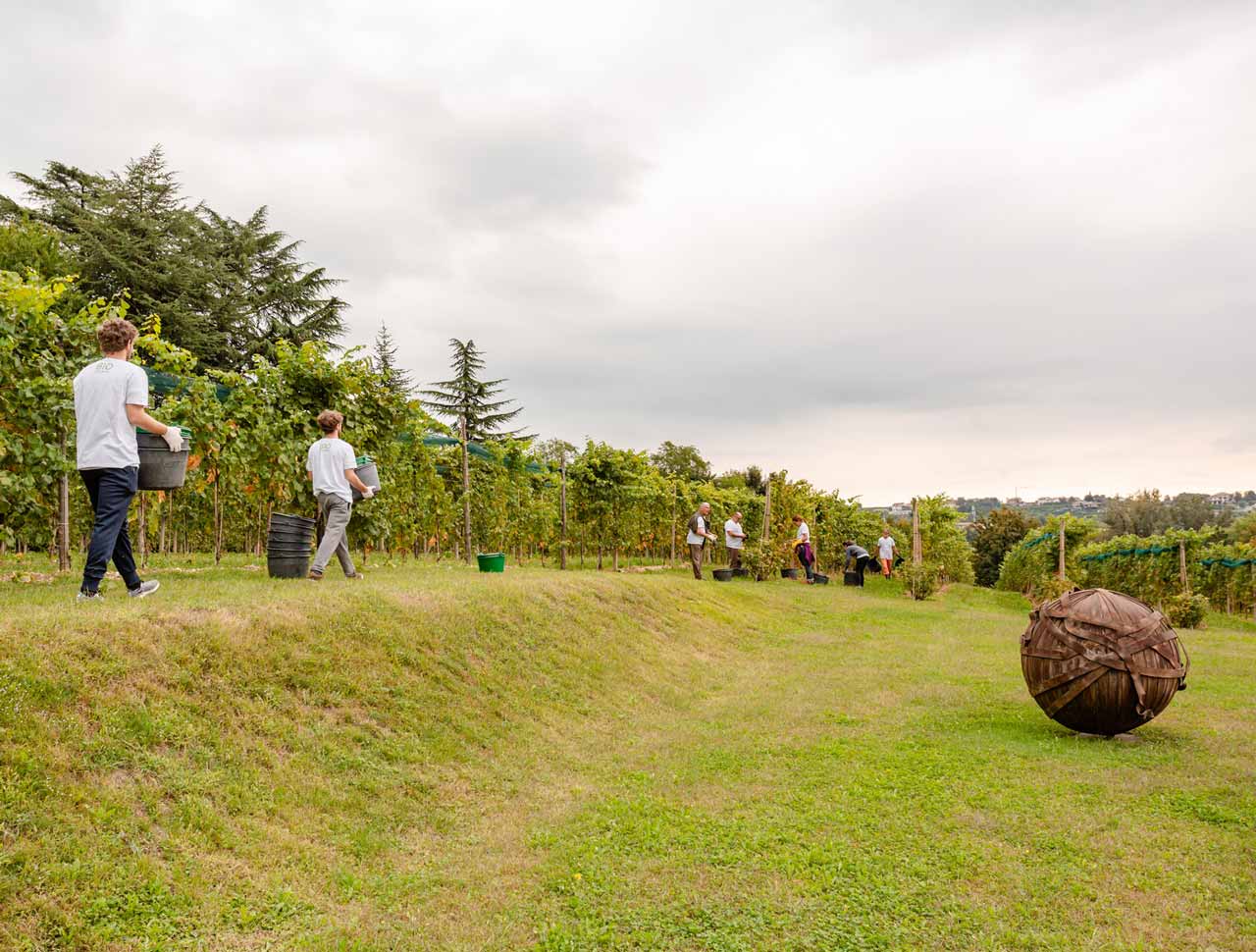THE ENVIRONMENT
THE MOST IMPORTANT
THANK YOU
Ever more sustainable choices to protect the planet.
Projects

Environmental responsibility | VALDOBBIADENE | VENETO
GREEN MARK
This policy, subscribed to by all the growers who supply grapes to the winery, joins the protocol of the Conegliano Valdobbiadene Consortium to improve the health and defence of the plants through the use of products that have the least impact on the environment.
In 2008 the decision was taken to change over the family owned vineyards to an organic growing system.
In addition, to safeguard the biodiversity of the Glera grape it was decided to develop a project that would entail the protection, study and recovery of the genetic material of old vines, salvaging the most stable plants – over sixty years old – which would bring about an improvement in the quality and productivity of the vineyard.
Environmental responsibility | VALDOBBIADENE | VENETO
CARBON FOOTPRINT
Product Life Cycle Assessment
Bortolomiol has taken one step further forwards along the road to eco-sustainability by developing a project in partnership with Indaco2 S.r.l., a spin-off company of the University of Siena. Once again, it chose to pay special attention to the environment and its territory by commissioning the “Product Carbon Footprint” study to assess the amount of greenhouse gas released into the atmosphere during production of two of the most prestigious wines.
The analysis showed that the entire life cycle of the wines Grande Cuvée del Fondatore Motus Vitae (Prosecco Superiore di Conegliano Valdobbiadene DOCG di Rive di San Pietro di Barbozza) and Ius Naturae (Organic Prosecco Superiore di Conegliano Valdobbiadene DOCG), generates emissions that are amply compensated by the woodland area of over three hectares owned by the Bortolomiol family near to Monte Cesen. This woodland contains and protects the Valdobbiadene hills from the cold north winds.
The Life Cycle Assessment for the wines took into account: the way the vineyard is managed, the wine-making process in the cellar and turning the wine into sparkling wine, bottling and treatment of the packaging materials when their useful life is over.


Environmental responsibility | VALDOBBIADENE | VENETO
EPD
Environmental Product Declaration
The Environmental Product Declaration (EPD) is the only environmental quality certification currently valid internationally (ISO 14025). Bortolomiol is the first wine-growing enterprise to obtain it.
On 14 April 2021 the Stockholm-based body that presides over the International EPD System published the first Environmental Product Declaration in the wine-growing sector; it was obtained with the IUS Naturae, Prosecco Superiore DOCG Brut Millesimato made from grapes grown in the Parco della Filandetta, the organic heart of the Bortolomiol family winery.
The Ius Naturae certification is the result of a project that began in 2018 by Bortolomiol in partnership with Indaco2, a spin-off company of the University of Siena, for the Life Cycle Assessment (LCA) of the company’s wines.
It involves complete monitoring of the production process: from managing the vineyard to disposal of the packaging material. (ISO14040-44).
ORGANIC VINEYARD
In the heart of Valdobbiadene
In 2008 Bortolomiol took the decision to change over its vineyards to an organic growing system, a farming approach designed to preserve the natural habitat of the vineyard, embarking upon a production process aimed at optimising the quality of the wine produced while safeguarding the environment and human health. The aim is to produce an authentic Organic District in the heart of the Appellation area. From the organic vineyard in the heart of Valdobbiadene – inside the Parco della Filandetta – comes the Ius Naturae Valdobbiadene Prosecco Superiore DOCG Organic wine, the natural consequence of the production policy based on sustainable and environmentally-friendly wine growing practices.
Organic wine growing involves the adoption of a series of farming procedures that minimise the use of synthetic chemicals. This farming method not only involves defending the health of the plants with copper and sulphur, but also the choice of growing system, pruning, how the land is worked, how the foliage is dealt with and so on right up to harvesting. This strict production process takes place with a continuous presence in the vineyard in order to observe and monitor the progression of the natural cycles of the vines and the problems they can encounter.

Environmental Labelling

